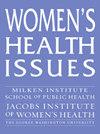Association Between Out-of-Pocket Insurance Costs and Psychotherapy Utilization Among Commercially Insured Birthing Individuals
IF 2.5
2区 医学
Q2 PUBLIC, ENVIRONMENTAL & OCCUPATIONAL HEALTH
引用次数: 0
Abstract
Background
Perinatal mood and anxiety disorders (PMADs) are common, burdensome, and costly pregnancy complications, yet few receive treatment. Out-of-pocket costs (OOPCs) may represent a significant barrier to PMAD treatment.
Objectives
In a population of commercially insured enrollees with a documented live birth, we sought to determine whether commercial insurance plans with above-median OOPCs had lower rates and amounts of psychotherapy utilization than plans with below-median OOPCs and whether utilization differed by income or mental health status.
Methods
This serial, cross-sectional study used Optum's de-identified Clinformatics® Data Mart Database (2016–2020). We tested associations using logistic regression predicting psychotherapy utilization. Our sample included 219,043 unique births from 199,022 enrollees in 38,512 insurance plans. We categorized all enrollees as having low or high OOPCs, income below 400% of the federal poverty level or at or above 400% federal poverty level, and claims indicating a PMAD or not.
Results
The median OOPC for psychotherapy rose from $49 in 2016 to $54 in 2020. Enrollees in low OOPC plans were 1.12 (95% confidence interval [1.10, 1.15]) times more likely to utilize psychotherapy than those in high OOPC plans. Lower-income enrollees with PMADs attended the same number of psychotherapy visits regardless of OOPC level (five visits for low and high OOPC plans). Higher-income enrollees attended more psychotherapy by OOPC plan level (seven visits for low OOPC plans vs. six visits for high OOPC plans).
Discussion
Higher OOPCs were associated with lower psychotherapy utilization among higher-income enrollees, whereas lower-income enrollees used less psychotherapy regardless of OOPC level. Reducing or eliminating cost sharing for PMADs may improve access and enhance equity.
商业保险生育个体自付保险费用与心理治疗使用的关系。
背景:围产期情绪和焦虑障碍(PMADs)是常见的、负担沉重的、昂贵的妊娠并发症,但很少有人得到治疗。自付费用(OOPCs)可能是PMAD治疗的重大障碍。目的:在有活产记录的商业保险参保人群中,我们试图确定OOPCs高于中位数的商业保险计划是否比OOPCs低于中位数的商业保险计划有更低的心理治疗使用率和数量,以及使用率是否因收入或心理健康状况而异。方法:本系列横断面研究使用Optum的去识别Clinformatics®数据集市数据库(2016-2020)。我们使用逻辑回归来检验预测心理治疗使用的关联。我们的样本包括来自38,512个保险计划的199,022名参保者的219,043名独特出生。我们将所有参保者的oopc分为低或高、收入低于联邦贫困线的400%或等于或高于联邦贫困线的400%,以及声称是否患有PMAD。结果:心理治疗的OOPC中位数从2016年的49美元上升到2020年的54美元。低OOPC计划的参与者使用心理治疗的可能性是高OOPC计划参与者的1.12倍,95%可信区间[1.10,1.15]。无论OOPC水平如何,低收入的ppmad患者接受心理治疗的次数相同(低OOPC计划和高OOPC计划分别为5次)。按OOPC计划水平划分,高收入参选者参加心理治疗的次数更多(低OOPC计划参选者7次,高OOPC计划参选者6次)。讨论:在高收入入组者中,较高的OOPC与较低的心理治疗使用率相关,而低收入入组者无论OOPC水平如何,都较少使用心理治疗。减少或取消pads的费用分摊可以改善获取和增强公平性。
本文章由计算机程序翻译,如有差异,请以英文原文为准。
求助全文
约1分钟内获得全文
求助全文
来源期刊

Womens Health Issues
Multiple-
CiteScore
4.50
自引率
6.20%
发文量
97
审稿时长
32 days
期刊介绍:
Women"s Health Issues (WHI) is a peer-reviewed, bimonthly, multidisciplinary journal that publishes research and review manuscripts related to women"s health care and policy. As the official journal of the Jacobs Institute of Women"s Health, it is dedicated to improving the health and health care of all women throughout the lifespan and in diverse communities. The journal seeks to inform health services researchers, health care and public health professionals, social scientists, policymakers, and others concerned with women"s health.
 求助内容:
求助内容: 应助结果提醒方式:
应助结果提醒方式:


